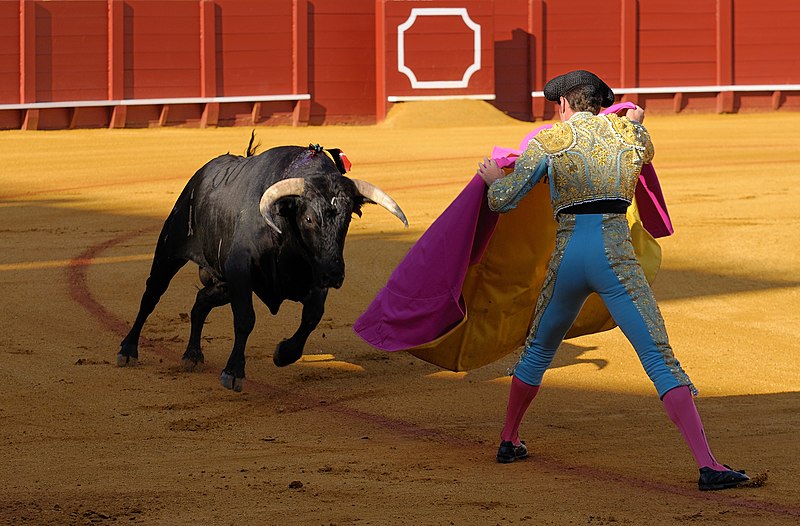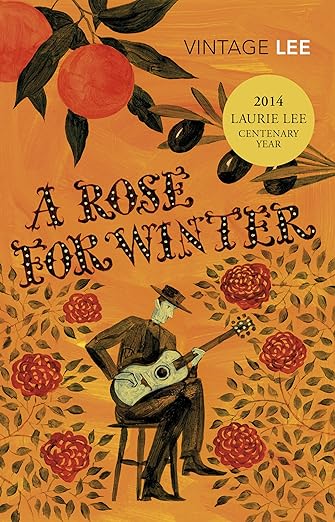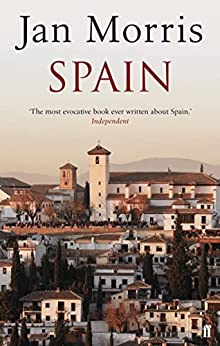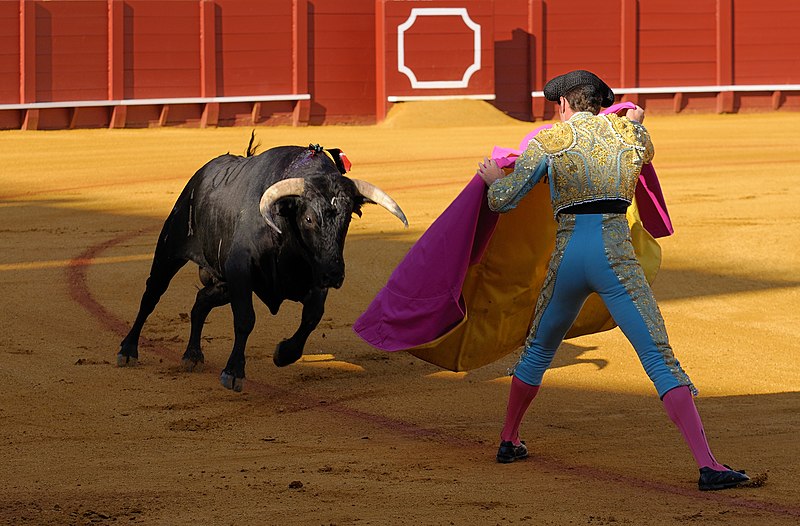Last Updated on January 4, 2024 by Marian Jones
Bullfighting is an integral part of Sevillian culture, whether you are for or against it. We look at the arguments on both sides, then learn a little history and some basic facts about bullfighting today. We also visit the Seville bullring – the oldest in Spain – and its museum and hear from travel writers, novelists and poets what they thought about it all.
for and against bullfighting



Bullfighting certainly divides opinion. In fact, it always has. Writing in 1833, the Marquess of Londonderry accepted that this ‘sport’ involved ‘the flower of chivalry of the proudest nation in the world’ but concluded that really ‘the spectacle is anything but ennobling’. You will find big, noisy demonstrations against bullfighting in Seville today, joined by those who think it is a cruel blood sport which has no place in a civilised society in the 21st century. For others it retains a valuable place in Spanish culture, centring on the 70 bullrings found in Andalucia today, its future secured by the country’s 40 bullfighting schools.
Spaniards themselves are divided. Bullfighting is legal in Spain, but banned in some individual towns. It was taken off Spanish tv in 2007, but later re-instated on public demand. Edward Lewine addresses the topic at the beginning of his factual study of bullfighting, Death and the Sun. ‘In a formal Spanish bullfight, six large animals are put to death for the entertainment of a paying crowd’, he writes. Is it right, he asks, for people to kill animals for pleasure? He explains that his aim is to tell the readers all about bullfighting and leave them to decide for themselves. The moral question, he explains, ‘is not the topic of this book.’ Nor is it the subject of this post.
a little history
Bullfighting arrived in Spain with the Romans and was developed by the Moors. Until the 17th century it was practised by Spanish noblemen on horseback as a way of toughening them up for war. In the early 1700s the Andalusian Francisco Romero began to fight bulls on foot beginning a new tradition. Fransisco was succeeded by his son Juan and grandson Pedro, who is said to have killed 5,000 bulls in his 60- year career, and bullfighting as we know it today was established. The early 20th century saw the emergence of more famous matadors, notably Joselito who was killed in the bullring in 1920 and his contemporary Juan Belmonte who survived being gored by bulls at least 20 times.
On the podcast you can hear about the strange connection between bullfighting and the Virgin Mary, which explains the presence of a chapel at bullrings, including Seville, where matadors offer prayers before entering the ring.
at a bullfight



At a traditional bullfight, there will be 6 fights, each consisting of 3 stages. First the bull is confronted by a number of ‘peones’, or junior fighters who are then joined by the ‘matador’, the man who will kill him. The second stage is the ‘tercia de banderillos’, when darts are stuck into the bulls’s neck to weaken him. Finally, the matador returns to ‘play’ the bull, choosing a moment to kill him by plunging his sword deep into the animal’s neck. This final stage, the ‘estocado’, is timed. Trumpet blasts warn the matador after 10 and 13 minutes and if 15 minutes have passed the bull is led away, something deemed as shameful for the matador.
authors on bullfighting
Ernest Hemingway in Death in the Afternoon: ‘The bullfight is not a sport in the Anglo-Saxon sense of the word, that is it is not an equal contest … between a bull and a man. Rather, it is a tragedy.’
Laurie Lee in A Rose for Winter: ‘The boy entirely dominated the bull. He seemed to turn the fury of the beast into a creative force which he alone controlled, a thrusting weight of flesh and bone with which he drew ritual patterns across the sand. The bull charged and charged again, loud-nostrilled, sweating for death, and the boy turned and teased him at will, reducing him at last to a kind of enchanted helplessness, so that the bulls stood hypnotised, unable to move, while the young man kissed his horns. Alone in the ring, unarmed with the beast, he had proved himself the stronger.’
Jan Morris in Spain: If you are unlucky, your corrida will be one long inept butchery, but if you have chosen well, you may see a kill by one of the masters, short, calm, elegant.’
There are more quotations on the podcast, along with a section on bullfighting as a business which brings over a billion Euros to the Spanish economy every year.
at seville’s bullring



Seville’s famous bullring, the oldest in the world, is the ‘Real Maestanza’, also known as the ‘Catedral del Toreo’ (Cathedral of bullfighting). You can visit it and tour the arena, where the sand-covered central ‘ring’ is surrounded by tiered seating – 17,500 places in all, including a Royal Box and 6 ‘guest’ balconies where celebrity visitors sit. It’s an impressive sight, painted mainly in white, with splashes of ochre and dark red. You’ll see the pens from which the bulls emerge, and the sheds where their dead bodies are taken. There is a vet’s enclosure and an infirmary for emergency treatment for matadors, plus statues of famous bullfighters from the past. There’s also a ‘Bullfighters’ Chapel’ and a museum.
The museum’s exhibits take you through the history of bullfighting from its earliest beginnings up to the present day. They include paintings of bullfighting scenes and material on famous matadors from the past, such as bronze sculptures pf Juan Belmonte and Joselito. There are bulls’ heads, matador costumes and capes and a collection of posters for the Real Maestranza from across the ages, beginning with a silk poster dating from 1740.
Let’s leave the last word to Spain’s most famous poet, Federico Garcia Lorca who wrote a poem on bullfighting known to every Spaniard: La Cogida y la Muerte, or Goring and Death in English. It’s a graphic description of the hot afternoon in August 1934 when the Sevillian matador Sanchez Mejias was gored to death in the ring by a bull called Granadino. The phrase ‘at 5 o’clock in the afternoon’ is repeated, a banal phrase contrasting starkly with the grim descriptions of a man’s violent death.
A las cinco de la tarde
Ay que terribiles cinco de la tarde
Eran las cinco en todos los relojes
Eran las cinco en sombra de la tarde
At five in the afternoon
What a terrible five in the afternoon
It was five o’clock on all the clocks
It was five o’clock in the shade of the afternoon
Listen to the POdcast
Reading suggestions
Spain by Jan Morris
Death and the Sun by Edward Lewine (‘A Matador’s Season in the Heart of Spain)
A Rose for Winter by Laurie Lee
Death in the Afternoon by Ernest Hemingway
links for this post
Previous Episode Triana
Next Episode Seville’s Flamenco Tradition






